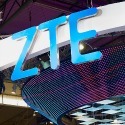ZTE's Future at Stake as Venezuela Deal Attracts US Scrutiny
Embattled Chinese equipment vendor is staring at trouble after US senators called for an investigation into possible sanctions breaches in Venezuela.

Shares in ZTE fell nearly 5% in Hong Kong after US senators reportedly called for an investigation into a possible sanctions breach by the Chinese equipment maker in Venezuela.
ZTE Corp. (Shenzhen: 000063; Hong Kong: 0763) stands accused of using components from Dell, a US technology company, to help Venezuela's government build a database for monitoring citizens. Reuters, which broke the story, claims to have seen a document proving that ZTE used Dell storage units during work it carried out for Cantv, Venezuela's state-backed telco.
The company nearly went out of business earlier this year after US authorities banned it from acquiring US components because of previous violations. In that case, ZTE was charged with installing US components in equipment it sold to Iran and North Korea.
After it had paid hefty fines and sacked its senior management team, ZTE was allowed to resume business with US component makers, but its own customers have eyed the vendor warily ever since the original scandal. (See Amid the rubble of L'Aquila, ZTE tries to rebuild.)
In all likelihood, another round of US penalties would be tantamount to a death sentence for ZTE, as customers that suffered during the components ban turn to other suppliers deemed a safer bet.
In the latest case, US Senators Chris Van Hollen and Marco Rubio -- fierce critics of the Chinese vendor -- have urged President Trump's administration to investigate ZTE on three fronts to determine if it worked with individuals cited by US sanctions, made unlawful use of components from US companies and was a party to human rights abuses by the Venezuelan government.
Neither ZTE nor representatives from the Venezuelan government responded to its requests for comments, says Reuters.
The report comes during a week of bad news for ZTE and larger Chinese rival Huawei, which face possible exclusion from 5G markets in Western countries where some officials regard the companies as a potential threat to national security. (See Eurobites: US Leans on Germany, UK to Give Huawei the Heave-Ho.)
Opponents cite their close links to the Chinese government and say they could install "spyware" in network equipment to support surveillance efforts by Chinese authorities.
Neither company has been able to sell equipment to the Tier 1 US operators since 2012, when a US government report first marked them down as a risky choice of supplier. The Trump administration now appears to be leaning on its allies to introduce similar restrictions.
Australia and New Zealand have already moved to limit China's role in their 5G markets, while governments in Canada, Germany, Japan and the UK are said to be considering a ban. (See New Zealand blocks Huawei from 5G deal with Spark, Australia Excludes Huawei, ZTE From 5G Rollouts, UK Govt Warns Telcos on Choice of 5G Vendors and US Senators Urge Canada to Ban Huawei – Report.)
After paying US fines, ZTE previously said it would rack up a net loss of about $1 billion this year, but it also heralded a "strong recovery" in its recent third quarter, when it turned a small net profit of about $81 million and saw revenues decline just 14%, year-on-year, to around $2.8 billion.
Want to know more about 5G? Check out our dedicated 5G content channel here on
Light Reading.
However, experts who spoke with Light Reading on condition of anonymity attributed that recovery to a back-up in demand while the components ban was in force and warned that operators might seek to replace ZTE as they roll out new 5G networks.
Italy's Wind Tre, one of ZTE's biggest European customers, previously blamed the components ban for delays to an important network project and said this had resulted in customer losses and a sales decline. Although it has maintained its relationship with ZTE, Wind Tre has taken some work off the Chinese company and handed this to Sweden's Ericsson AB (Nasdaq: ERIC) instead. (See ZTE ban and Iliad entry blow Wind Tre of course.)
While ZTE's run-in with US government authorities has created uncertainty in the market, the Chinese vendor could also lack the R&D might to challenge its bigger rivals in future, says Bengt Nordström, the CEO of analyst firm Northstream.
"You can't just rip them out of the network, but the long-term direction is that they may be in a sub-scale position," he said in a recent conversation with Light Reading. "They will obviously be strong in China and to a certain extent in the Asia-Pacific, but their problem is the R&D budget."
Striving to address such concerns, ZTE ramped up its R&D spending in the recent third quarter by 37% compared with the year-earlier period, to around $500 million.
However, Ericsson and the networks business of Nokia Corp. (NYSE: NOK) each spent around $1 billion in the same period. And while Huawei Technologies Co. Ltd. does not publish quarterly earnings, it promised to invest between $10 billion and $20 billion annually in R&D at the start of this year. (See Huawei Commits Up to $20B for Annual R&D, Fleshes Out AI Pitch.)
Frozen at HK$25.60 ($3.27) during the components ban, ZTE's share price sank to HK$14.96 ($1.91) in mid-June when it resumed trading. It closed at HK$15.36 ($1.96) after today's fall of 4.83%.
— Iain Morris, International Editor, Light Reading
Read more about:
AsiaAbout the Author(s)
You May Also Like



.jpg?width=300&auto=webp&quality=80&disable=upscale)








